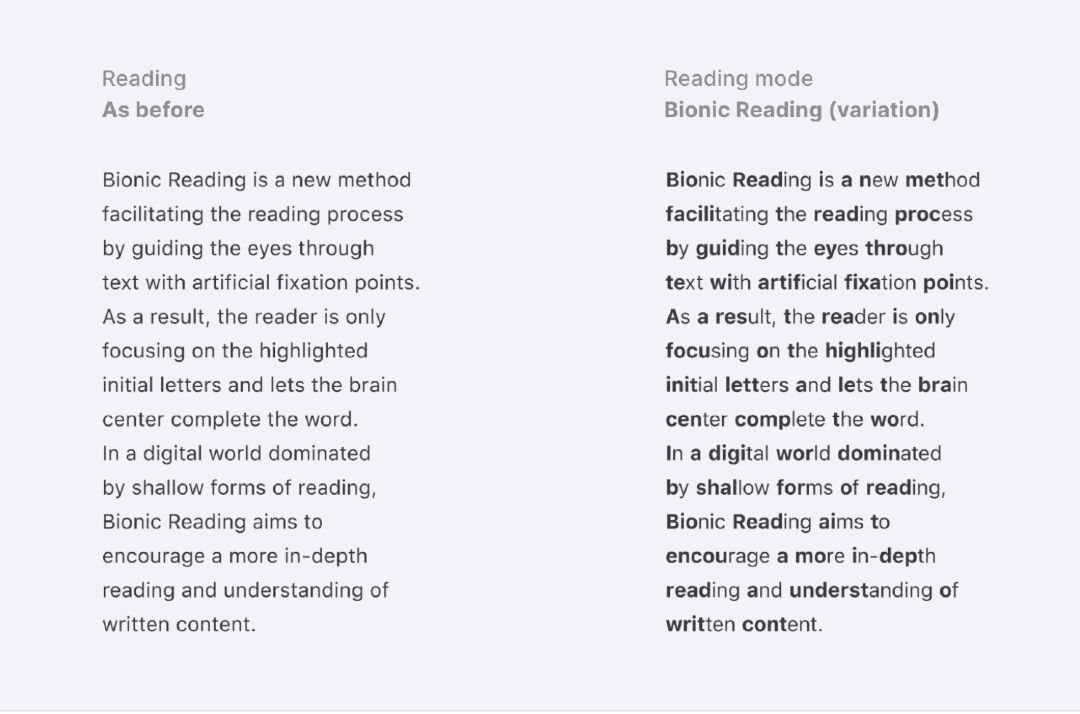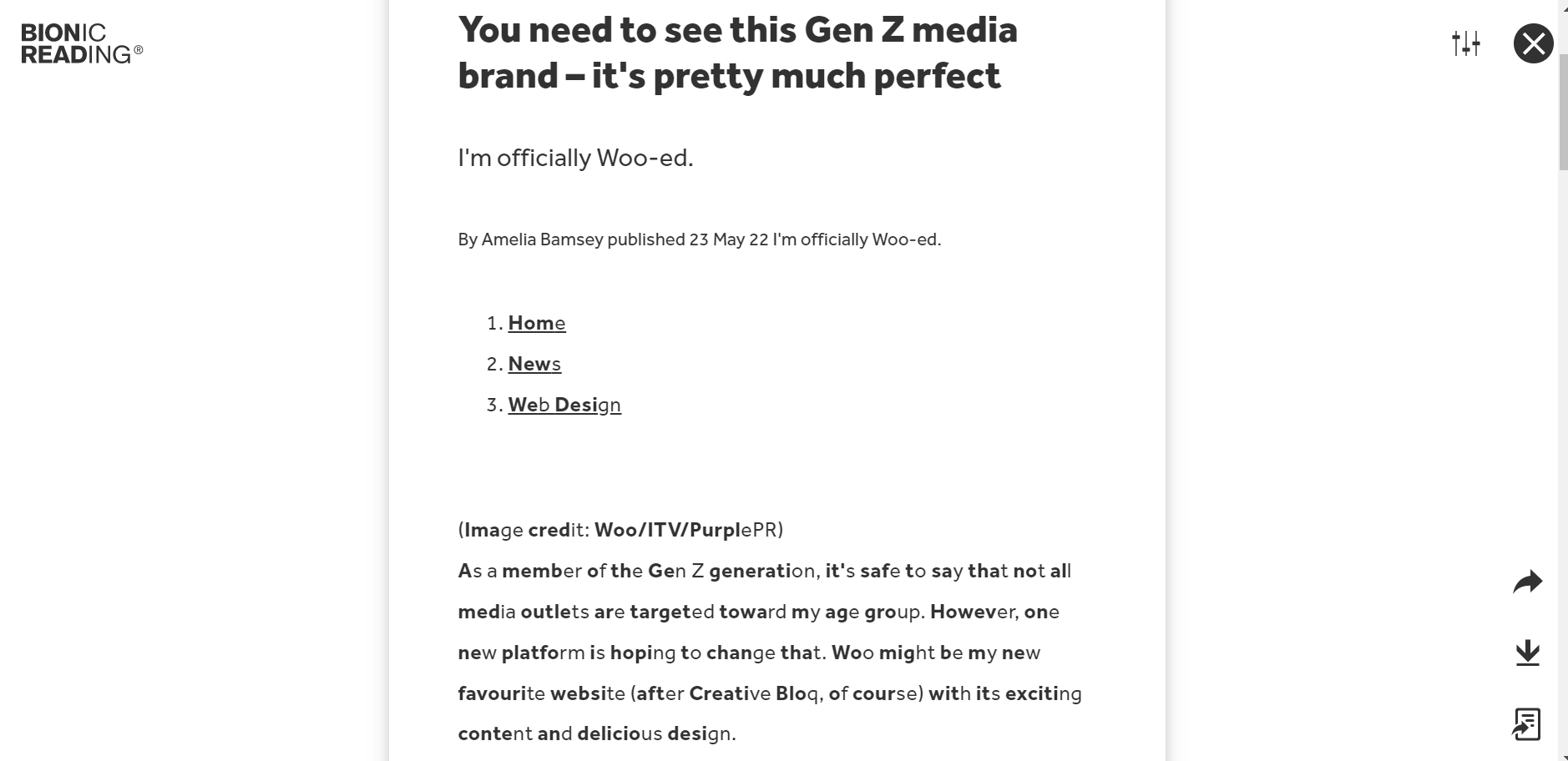A lot of things have become faster thanks to technology. AI-powered tools help us design and edit quicker than ever and we can communicate instantly with clients around the world. Reading, however, kind of takes the length of time it's always taken, and while we might be able to fit thousands of books in an e-reader, getting round to reading them all is another matter.
But a Swiss typography designer reckons he has a surprisingly low-tech solution, and it's taken the internet by storm. He's discovered that bolding the initial parts of words allows the eye to focus only on them, allowing the brain to quickly fill in the rest of the word. It's something that could be very welcome for anyone who's availed themselves of one of the best Kindle deals to get themselves a new e-reader.

Renato Casutt has called his technique 'Bionic Reading'. The first few letters of words are emphasised by using bold type, to create “artificial fixation points.” He believes this removes strain from the eyes while retaining understanding, allowing us to read and understand a text more quickly and with less effort.
Casutt says he discovered the phenomenon by accident while working on a book in a foreign language, when he found he could relate the foreign words to words in his own language when parts were sectioned off. After tests found that students agreed, work began on a free Bionic Reading converter. UX writer Juan Buis has since promoted the tool on Twitter, with his tweet going viral, already gaining more than 17K retweets.
it’s incredible how reading this feels like finally unlocking 100% of your brain(via @christophepas) pic.twitter.com/nU6CblVZWTMay 18, 2022
The Bionic Reading converter allows users to choose the number of letters bolded in a text, the frequency of the bolded fixation points and the opacity of the bolded letters. It also has options to change fonts and font size and to adjust line spacing, height and column width. You can use the converter to apply the Bionic Reading method to websites in your browser by entering the URL, or you can drag or drop files from your computer to convert them. We tried it out with an article from Creative Bloq, and this is how it looked:

We found we had to use a few of the adjustment options to make the text comfortable to read, and the tool itself could perhaps do with a few UI tweaks, but the method poses interesting opportunities and challenges for designers working with type when it comes to aiding readability.
Casutt has also made the tool's API available for designers and developers to incorporate Bionic Reading into their apps. And the tool could also serve as an accessibility booster. “Being dyslexic, this really helps me,” comments a user named Jennifer on the Bionic Reading site after using the tool via the Reeder RSS reader app. “Keep up the great work and hope to see you on Safari soon."
Get the Creative Bloq Newsletter
Daily design news, reviews, how-tos and more, as picked by the editors.
Could the concept of Bionic Reading make its way into general design? Some may question the elegance of regularly bolded syllables, and it might not make sense in shorter texts. There's also the issue of how this would interfere with existing uses of bolded text, for example, to add emphasis to certain parts of a text. But for skim reading websites with reams of text that we want to get through quicky to find the information we need, this could be a real boon. And we might finally get through all the books waiting on our e-readers.
For more ideas on improving your web design, see our guide to the best web design tools and the best web design software.
Read more:

Thank you for reading 5 articles this month* Join now for unlimited access
Enjoy your first month for just £1 / $1 / €1
*Read 5 free articles per month without a subscription

Join now for unlimited access
Try first month for just £1 / $1 / €1

Joe is a regular freelance journalist and editor at Creative Bloq. He writes news, features and buying guides and keeps track of the best equipment and software for creatives, from video editing programs to monitors and accessories. A veteran news writer and photographer, he now works as a project manager at the London and Buenos Aires-based design, production and branding agency Hermana Creatives. There he manages a team of designers, photographers and video editors who specialise in producing visual content and design assets for the hospitality sector. He also dances Argentine tango.
